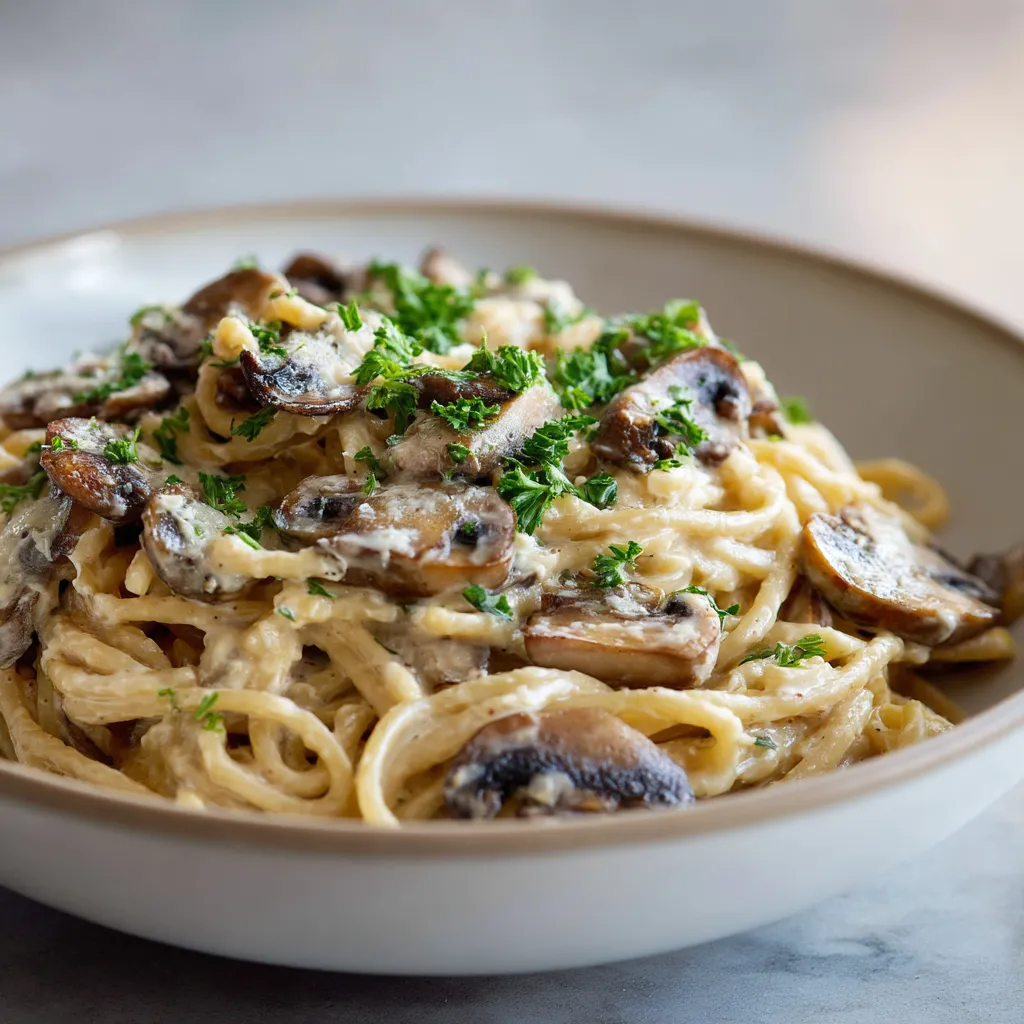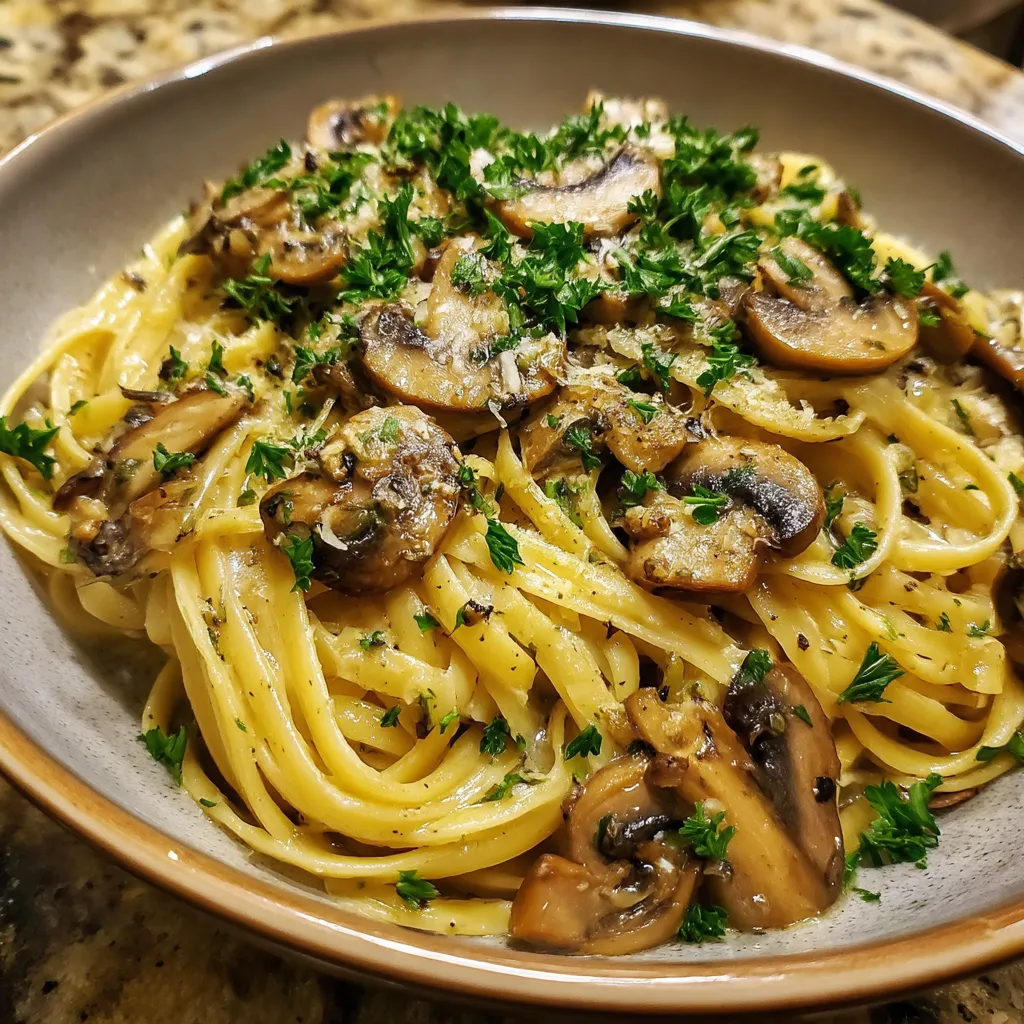 Save to Pinterest
Save to Pinterest Creamy miso mushroom pasta brings together silky noodles with a bold umami sauce that’s deeply satisfying yet takes under half an hour from start to finish. The combination of white miso, earthy mushrooms, and a lush creamy base makes this a comforting and memorable weeknight meal you’ll want to make again and again.
I whipped this up on a whim the first time we had leftover mushrooms and miso paste in the fridge. It quickly became my husband’s favorite after-work comfort meal.
Ingredients
- Pasta: Choose a high-quality dried pasta for the best texture. Whole wheat or gluten-free options work just as well.
- Olive oil: Adds richness and depth. Use extra virgin for the best flavor.
- Onion and garlic: These aromatics are foundational for deep savory notes. Choose yellow onions for sweetness and fresh, firm garlic cloves.
- Mushrooms: The star of the dish. Look for fresh cremini or button mushrooms with firm caps. Avoid mushrooms with slimy spots.
- White miso paste: Delivers essential umami and salty tang. Opt for refrigerated miso for best quality.
- Heavy cream or coconut cream: Forms the creamy base. Use a rich, well-shaken coconut cream for dairy-free.
- Vegetable or chicken broth: Adds a savory backbone. Go for low-sodium to control salt levels.
- Soy sauce: Layers on more umami. Use tamari for gluten-free.
- Rice vinegar: Brightens and balances the sauce with gentle acidity. Unseasoned is best.
- Sesame oil: Optional, but boosts depth with nutty notes. Use toasted sesame oil for maximum aroma.
- Salt and pepper: For taste adjustment. Always season gradually and taste as you go.
- Fresh parsley or chives: For an herby finish and color. Choose fresh, vibrant herbs.
- Parmesan cheese: Optional for creamy, salty finish. Try to use freshly grated.
Step-by-Step Instructions
- Boil the Pasta:
- Fill a large pot with water and add a hearty pinch of salt before bringing to a rolling boil. Cook your pasta according to the package instructions until just al dente. Reserve a half cup of the starchy cooking water before draining. The salty water seasons your pasta from the inside out.
- Sauté the Aromatics:
- Warm olive oil over medium heat in a spacious pan. Add finely chopped onion and minced garlic and let them cook gently for about three minutes. Stir often until the onion is translucent and fragrant without browning. Softening aromatics first draws out their natural sweetness.
- Cook the Mushrooms:
- Toss in the sliced mushrooms and raise the heat slightly. Allow them to cook undisturbed for two to three minutes to encourage golden edges. Stir occasionally and let them release and then reabsorb their moisture. The mushrooms’ flavors intensify with this simple process.
- Incorporate the Miso:
- Reduce heat to medium-low. Push mushrooms and onions to the side and add miso paste into a clear spot in the pan. Use a spatula to mash and blend the miso into the vegetable juices. Coat the mushrooms well while dissolving the paste. This ensures every bite is packed with umami.
- Make the Creamy Sauce:
- Pour in your heavy cream or coconut cream along with broth, soy sauce, rice vinegar, and sesame oil. Stir everything together and let it simmer for three minutes. The sauce will thicken and develop its savory tangy character.
- Season and Adjust Consistency:
- Taste and season with salt and pepper as needed. If the sauce seems overly thick, whisk in a splash of reserved pasta water. This starchy liquid helps the sauce cling perfectly to the noodles.
- Combine Pasta and Sauce:
- Transfer the drained pasta into the creamy miso mushroom sauce. Toss thoroughly to coat each strand and allow the noodles to soak up every bit of goodness.
- Serve and Garnish:
- Divide pasta into bowls. Add a sprinkle of chopped parsley or chives and a generous cloud of Parmesan or use your favorite dairy-free alternative. Serve right away for the creamiest experience.
 Save to Pinterest
Save to Pinterest I find white miso paste to be the secret superstar here. With its sweet and mellow tang, it brings balance and pops every other ingredient. My toddler once licked the spoon clean after helping stir it in.
Storage Tips
Leftovers keep beautifully in an airtight container for up to three days in the fridge. Reheat on the stovetop over gentle heat, adding a splash of extra broth or water to loosen the sauce. The dish is not ideal for freezing since the cream can split, but if you reheat gently, it is still delicious the next day.
Ingredient Substitutions
Try whole wheat or gluten-free pasta if needed. Swap coconut cream for a fully dairy-free pasta. That said, I would avoid red miso as it might overpower with saltiness. If you are out of rice vinegar, a squeeze of lemon juice will do in a pinch.
Serving Suggestions
Round out your meal with lightly dressed arugula or baby spinach for a peppery contrast. Garlic bread or toasted sourdough slices are perfect for mopping up the creamy sauce. If you are making this for a special occasion, add a crisp white wine to the table.
Cultural Context
This dish is a playful marriage of Japanese miso and classic Italian creamy pasta. The fusion approach nods to modern plant-focused comfort food while letting the core flavors of both cuisines shine. In Tokyo, some pasta shops serve a version of creamy miso sauce. I loved trying a version as a student there, which inspired my take at home.
 Save to Pinterest
Save to Pinterest Common Recipe Questions
- → What type of mushrooms should I use?
Cremini or button mushrooms are ideal, but any fresh mushrooms can enhance the earthy flavor.
- → Is this pasta suitable for vegans?
Use coconut cream and skip the Parmesan, or replace it with a dairy-free cheese, for a vegan-friendly option.
- → How can I adjust the sauce consistency?
If the sauce is too thick, add some reserved pasta cooking water until your preferred texture is achieved.
- → Can I use another type of pasta?
Absolutely! Spaghetti, fettuccine, or any pasta you like will work well with the creamy sauce.
- → How do I store leftovers?
Keep leftovers in an airtight container in the fridge and gently reheat with a splash of water or broth.
- → Does miso make the sauce salty?
Miso adds savory depth, so taste before adding extra salt to balance the flavors.